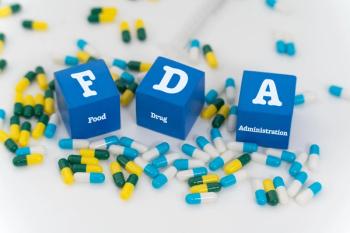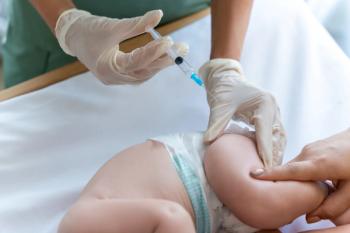
- Drug Topics January 2018
- Volume 162
- Issue 1
Specialty Pharmacy Will Gain a Bigger Chunk of U.S. Pharmaceuticals
The specialty explosion is only going to get bigger.
The specialty pharmacy market will continue to gain ground within the overall pharmaceutical market, according to a report from the HDA Research Foundation. In 2016, specialty pharmacy was 40% of the $450 billion pharmaceutical market, compared to 30% of the $318 billion market in 2012. Specialty sales in 2016 rose 11% over 2015 sales, to $181 billion.
Although the report does not focus on future sales or predict trends, this growth in market segment is expected to continue. “In our experience, I think you definitely see a growth in the industry being driven by specialty products," said Perry Fri, Executive Vice President for Industry Relations, Membership and Education at the Healthcare Distribution Alliance (HDA) and Chief Operating Officer for the HDA Research Foundation. “We know that growth is being driven by more medicines in this category, and more patients eligible to use those medicines.”
Of the $181 billion in 2016 sales of specialty drugs, $45 billion in sales was in the oncology market, the largest single therapeutic category. Medications for autoimmune issues came in second at $37 billion. However, $46 billion (13%) of specialty sales was in the category of “all other.”
One curious finding is that sales of some specialty drugs used to treat hepatitis C drugs have declined a bit in terms of overall sales, Fri noted in an interview with Drug Topics. Sales of Harvoni (ledipasvir/sofosbuvir, Gilead) went down by 4.3% from 2016 sales, while sales of Sovaldi (sofosbuvir. Gilead) went down by 0.6%. These decreases may be due to price pressure from less expensive competing drugs, he said. Still, Harvoni was the second-leading selling specialty drug, after Humira (adalimumab, Abbvie).
Related article:
The report found that the percentage of sales through distributors decreased in 2016 from 2015 for independent physician-owned or physician-operated clinics (from 49% to 45%) and hospital-owned or hospital-operated clinics (from 6% to 2%). Sales to hospitals increased from 30% to 35% and to specialty pharmacies from 6% to 8%.
These shifts are due to hospital consolidation and acquisition of independent physicians, as well as payer and PBM requirements that these drugs be dispensed through a specialty pharmacy. Other factors include greater use of oral oncolytic drugs that can be dispensed at either retail or specialty pharmacies.
The majority of specialty medications sold may need to be in locations such as hospitals and infusion clinics, because that is where the patients are who need those drugs. But some independent pharmacies are moving into specialty pharmacy. Sales to retail pharmacies are still small, only 2% weighted average percentage of distributor sales value, but Fri noted that this is double that seen in 2015.
“If I am an independent pharmacist, I am looking at what we are showing-5 to 6 years of growth in the specialty category-and I am starting to think about how do I make a dent in this market place?” Fri said. Independent pharmacies can work with partners in ways that can give them access to the specialty market, he explained. They can work with their wholesaler or through a buying group so they can fill orders for their patients one by one, “rather than have the products on their own shelf,” he said.
Manufacturers of specialty medications are bringing more innovative products to the market, Fri noted. “They are also making choices about how their drugs have the best possible pathways to the patients. Some of the pathways are actually through retail pharmacies.”
The findings were published in the foundation’s 2017 edition of Specialty Pharmaceutical Distribution: Facts, Figures and Trends, which is available for download
Articles in this issue
almost 8 years ago
Are Antibiotic Stewardship Programs Worth It?almost 8 years ago
The Value of Board-Certified Psychiatric Pharmacistsalmost 8 years ago
The First Billion-Dollar Drugalmost 8 years ago
Top 4 Trends for Hospital Pharmacists in 2018almost 8 years ago
Pharmacy Technology: Disruption or Improvement?almost 8 years ago
Top 7 Challenges (and Opportunities) for Pharmacy in 2018almost 8 years ago
Wellness Visits/Pharmacists: Perfect Togetheralmost 8 years ago
Automation Drives New Role for Hospital Pharmacistsabout 8 years ago
Pediatric Asthma: An Update for Pharmacistsabout 8 years ago
FDA Approves Emicizumab-kxwh for Hemophilia ANewsletter
Pharmacy practice is always changing. Stay ahead of the curve with the Drug Topics newsletter and get the latest drug information, industry trends, and patient care tips.













































































































































































































